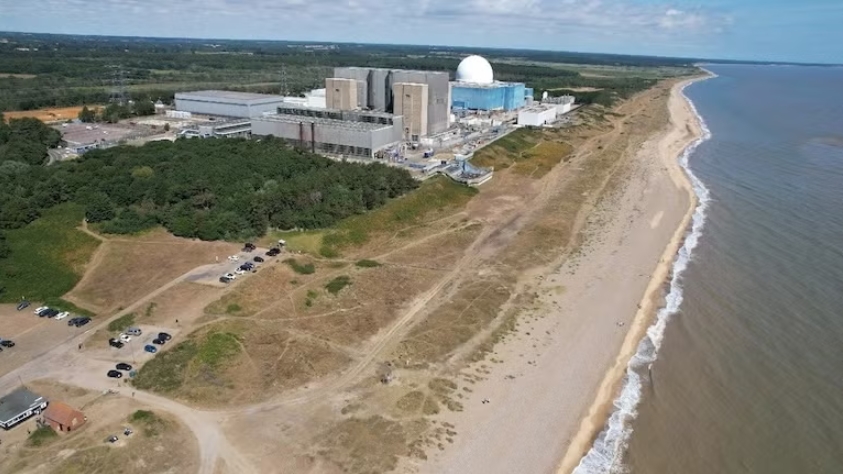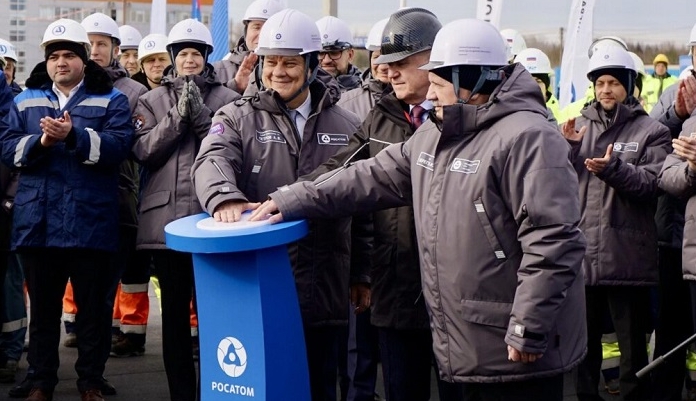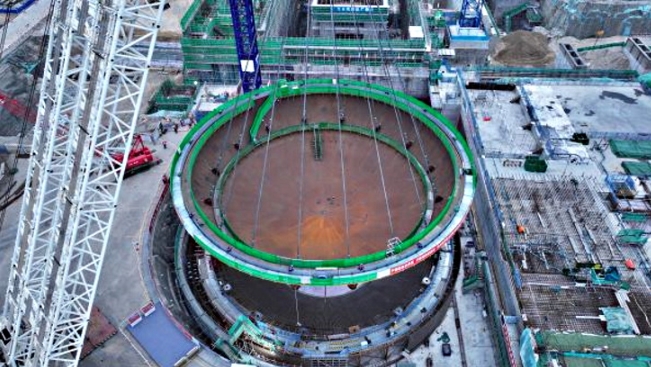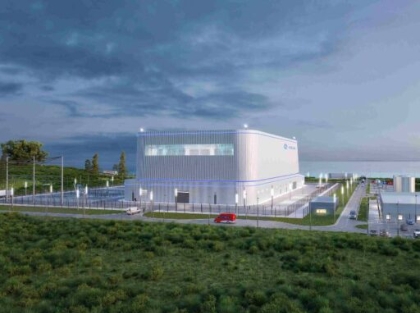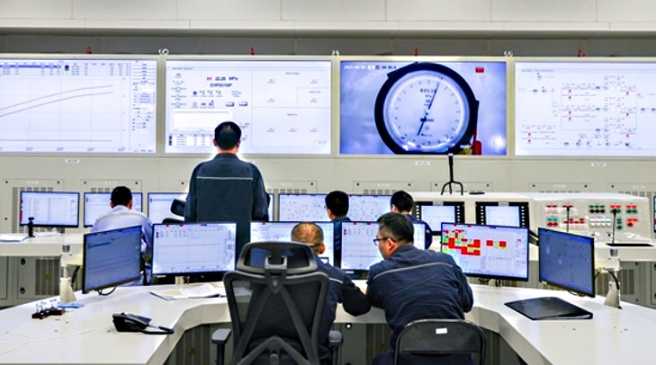Lead test assemblies of Westinghouse EnCore fuel rods containing uranium silicide fuel pellets have been loaded into a commercial nuclear power plant for the first time. The fuels, developed through the US Department of Energy's (DOE) accident tolerant fuels programme, were loaded into Exelon's Byron unit 2 during a scheduled refuelling outage.
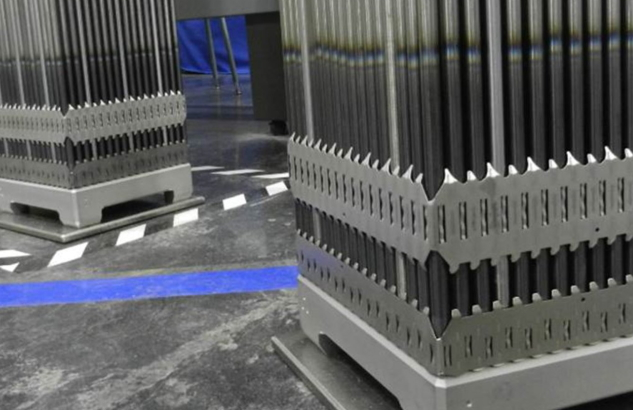 wo lead assemblies are now in a commercial reactor (Image: Westinghouse)
wo lead assemblies are now in a commercial reactor (Image: Westinghouse)
The two assemblies contain chromium-coated zirconium cladding for enhanced oxidation and corrosion resistance, higher density ADOPT pellets (Westinghouse's chromia and alumina doped UO2 pellets) for improved fuel economics, and uranium silicide pellets. Uranium silicide has a higher density of fissile material and higher thermal conductivity than uranium oxide, providing benefits in terms of improved safety and better plant economics through longer fuel cycles and enhanced flexible power operation capability. The silicide pellets in the lead test assemblies are enclosed in a zirconium alloy cladding and were manufactured at the Idaho National Laboratory.
"Westinghouse’s EnCore Fuel design was created to advance the future of the nuclear industry. We are very proud to have achieved this important programme milestone," Westinghouse President and Chief Executive Officer Patrick Fragman said. "Providing innovative products, solutions and services for our customers is at the forefront of all we do, and we are pleased to have partnered with Exelon to ultimately deliver greater efficiency and reliability through our new technology."
The DOE's accident tolerant fuel programme, through which Westinghouse and its partners have developed EnCore Fuel, is an industry-led effort to deliver new robust fuels to the market by 2026. The DOE programme's objective is to develop new cladding and fuel materials that can better tolerate the loss of active cooling in the core, while maintaining or improving fuel performance and economics during normal operations. A priority of the programme is to minimise the generation of hydrogen.
Framatome and General Electric, with GNF, are also developing accident tolerant fuel with the help of DOE funding. All three are now testing lead assemblies in commercial reactors. Lead test assemblies of GNF's IronClad and ARMOR accident tolerant fuels were loaded into Southern Nuclear Operating Company's Hatch unit 1 in March 2018, and the first full test assemblies of Framatome's Gaia fuel were loaded into Southern Nuclear's Vogtle 2 in March 2019.
The assemblies will stay in the reactors for up to six years. They will be examined between each refuelling cycle every 18 to 24 months. Some of the fuels will then be used in transient tests to help determine the safe operating limits of each fuel, the DOE said. The data collected will be used to license the fuels with the US Nuclear Regulatory Commission.
More accident tolerant fuels are expected to be placed in commercial reactors within the next year, DOE said.
